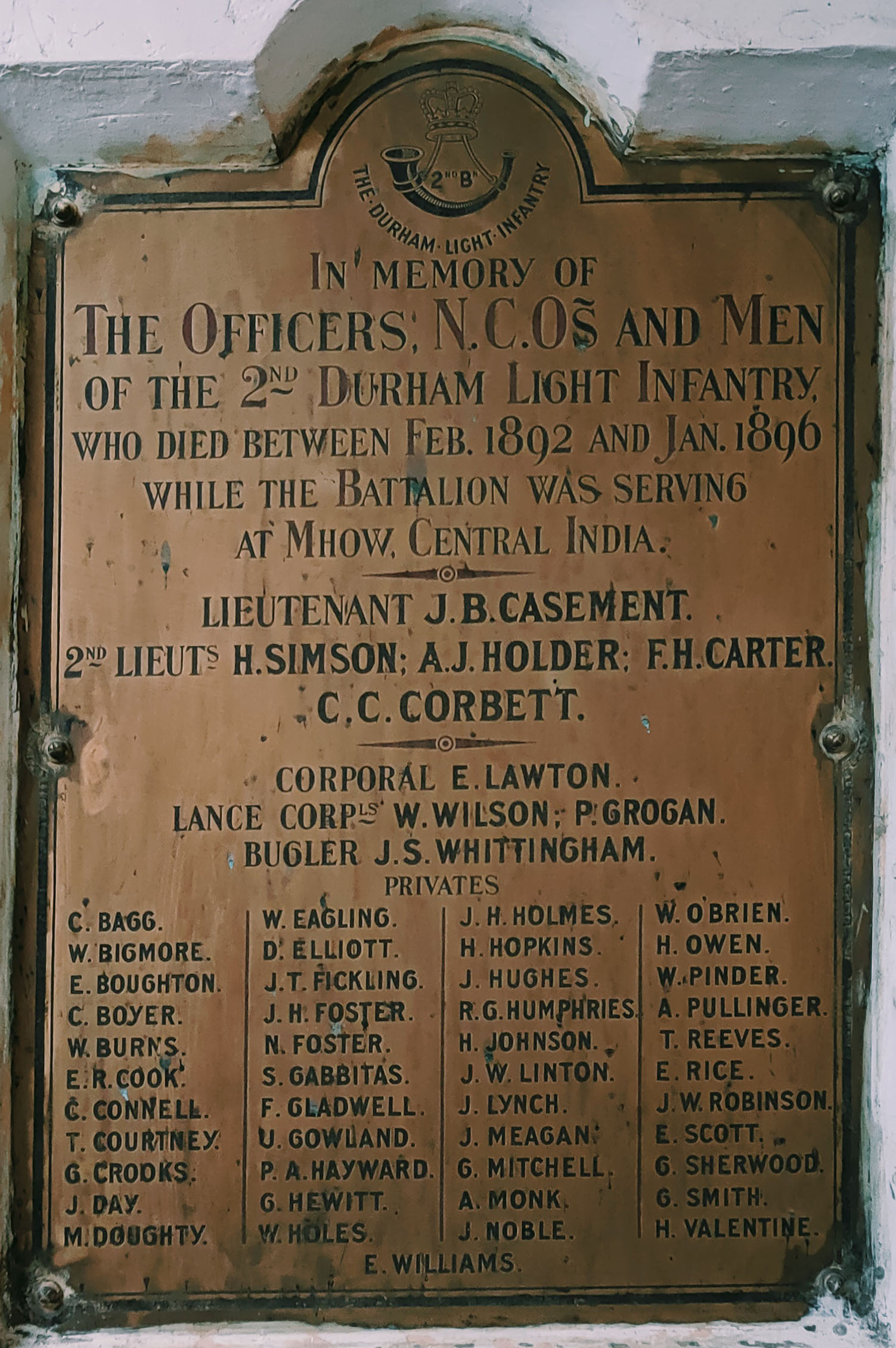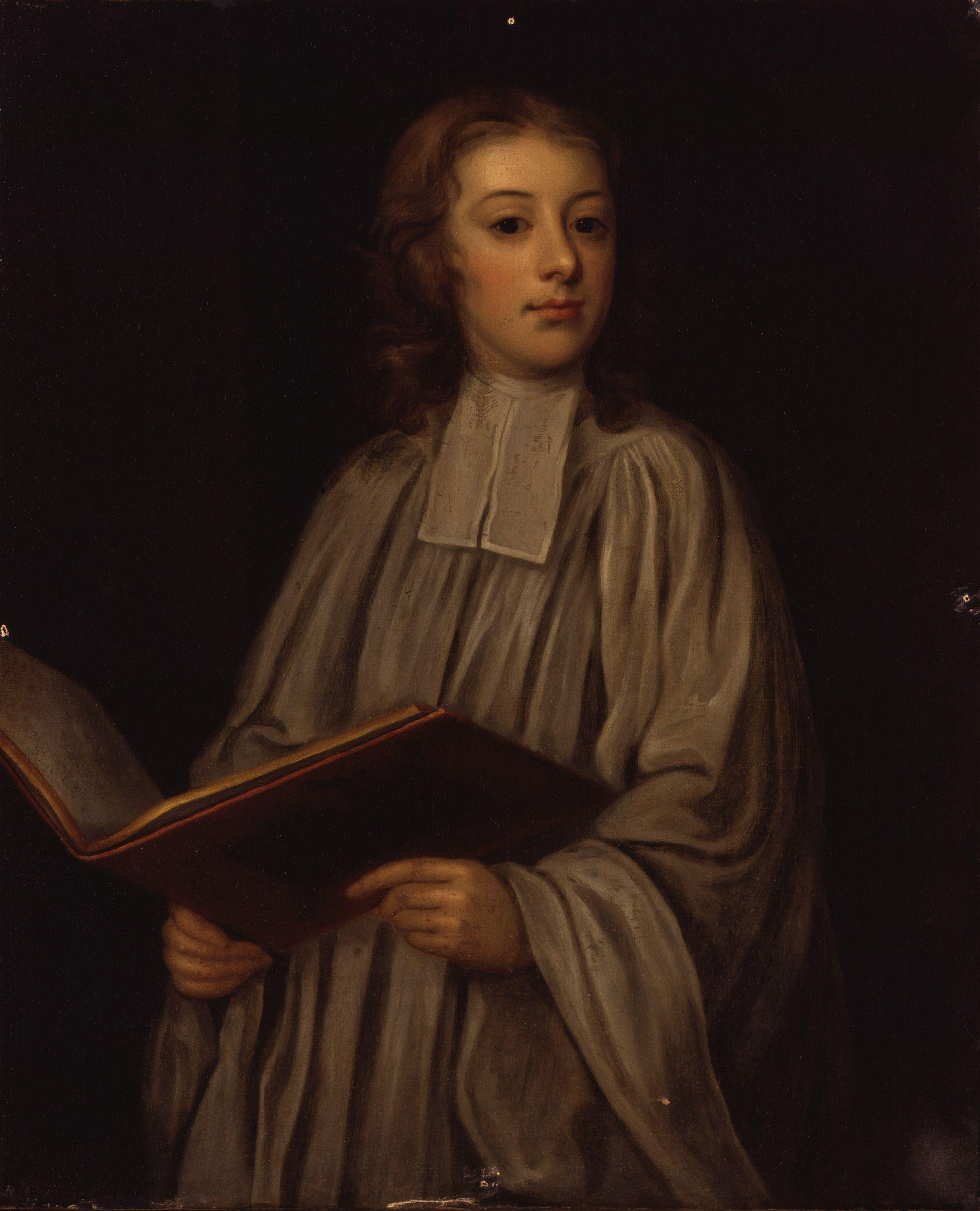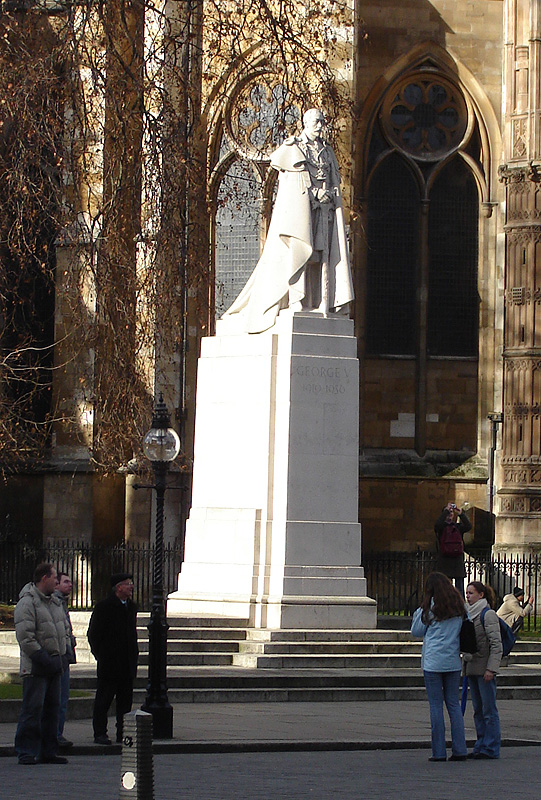|
Arras Flying Services Memorial
The Arras Flying Services Memorial Commonwealth War Graves Commission war memorial in the Faubourg d'Amiens Cemetery, Arras, France. The memorial commemorates nearly 1,000 airmen from forces of the Commonwealth who were killed on the Western Front during World War I and who have no known grave. The memorial was designed by Edwin Lutyens, sculpted by William Reid Dick and unveiled by Hugh Trenchard, 1st Viscount Trenchard, Marshal of the Royal Air Force on 31 July 1932. Background In the spring of 1916, French troops transferred the city of Arras in Pas-de-Calais, France, to the British armed forces. Construction of the British portion of Faubourg d'Amiens Cemetery in the western portion of Arras, near the Citadel designed by Vauban, began in March 1916, behind the existing French graveyard. After the Armistice, the cemetery was extended with graves that were transferred from the battlefield and from two smaller graveyards in the area. The graves in the French portion of the m ... [...More Info...] [...Related Items...] OR: [Wikipedia] [Google] [Baidu] |
Commonwealth War Graves Commission
The Commonwealth War Graves Commission (CWGC) is an intergovernmental organisation of six independent member states whose principal function is to mark, record and maintain the graves and places of commemoration of Commonwealth of Nations military service members who died in the two World Wars. The commission is also responsible for commemorating Commonwealth civilians who died as a result of enemy action during the Second World War. The commission was founded by Fabian Ware, Sir Fabian Ware and constituted through royal charter in 1917 as the Imperial War Graves Commission. The change to the present name took place in 1960. The commission, as part of its mandate, is responsible for commemorating all Commonwealth war dead individually and equally. To this end, the war dead are commemorated by a name on a headstone, at an identified site of a burial, or on a memorial. War dead are commemorated uniformly and equally, irrespective of military or civil rank, race or creed. The co ... [...More Info...] [...Related Items...] OR: [Wikipedia] [Google] [Baidu] |
Royal Air Force
The Royal Air Force (RAF) is the Air force, air and space force of the United Kingdom, British Overseas Territories and Crown Dependencies. It was formed towards the end of the World War I, First World War on 1 April 1918, on the merger of the Royal Flying Corps (RFC) and the Royal Naval Air Service (RNAS). Following the Allies of World War I, Allied victory over the Central Powers in 1918, the RAF emerged as the largest air force in the world at the time. Since its formation, the RAF has played History of the Royal Air Force, a significant role in Military history of the United Kingdom, British military history. In particular, during the Second World War, the RAF established Air supremacy, air superiority over Nazi Germany's Luftwaffe during the Battle of Britain, and led the Allied strategic bombing effort. The RAF's mission is to support the objectives of the British Ministry of Defence (United Kingdom), Ministry of Defence (MOD), which are to "provide the capabilities nee ... [...More Info...] [...Related Items...] OR: [Wikipedia] [Google] [Baidu] |
Durham Light Infantry
The Durham Light Infantry (DLI) was a light infantry regiment of the British Army in existence from 1881 to 1968. It was formed in 1881 under the Childers Reforms by the amalgamation of the 68th (Durham) Regiment of Foot (Light Infantry) and the 106th Regiment of Foot (Bombay Light Infantry) along with the Militia and Volunteers of County Durham. The regiment served notably in the Second Boer War, World War I and World War II, the Korean War and the Indonesia–Malaysia confrontation. During times of peace it had duty in India, China, West Germany and Cyprus. In 1968, the regiment was amalgamated with the Somerset and Cornwall Light Infantry, the King's Own Yorkshire Light Infantry and the King's Shropshire Light Infantry to form The Light Infantry, which again amalgamated in 2007 with the Devonshire and Dorset Regiment, the Royal Gloucestershire, Berkshire and Wiltshire Regiment and the Royal Green Jackets to form a new large regiment, The Rifles, which continues the li ... [...More Info...] [...Related Items...] OR: [Wikipedia] [Google] [Baidu] |
Fabian Ware
Major-General Sir Fabian Arthur Goulstone Ware (17 June 186928 April 1949) was a British educator, journalist, and the founder of the Imperial War Graves Commission (IWGC), now the Commonwealth War Graves Commission (CWGC). He also served as Director of Education for the Transvaal Colony and editor of ''The Morning Post''. Ware was born in Clifton, Bristol, and graduated from the University of Paris in 1894. Several years after graduation, he travelled to the Transvaal Colony where, as a member of Milner's Kindergarten, he became Director of Education in 1903. Two years later, Ware became editor of ''The Morning Post'' and returned to England. While editor, he expanded the paper and reoriented it to focus on colonial affairs. After several controversies, culminating in a failed effort to purchase an airship for the United Kingdom, Ware was forced to retire in 1911. When the First World War started in August 1914, Ware attempted to join the British Army but was rejected becau ... [...More Info...] [...Related Items...] OR: [Wikipedia] [Google] [Baidu] |
O God, Our Help In Ages Past
"Our God, Our Help in Ages Past" (or "O God, Our Help in Ages Past") is a hymn by Isaac Watts in 1708 that paraphrases the 90th Psalm of the Book of Psalms. It originally consisted of nine stanzas; however, in present usage the fourth, sixth, and eighth stanzas are commonly omitted to leave a total of six (Methodist hymn books also include the original sixth stanza to leave a total of seven) History The hymn was originally part of ''The Psalms of David Imitated in the Language of the New Testament'', published by Watts in 1719. In this book he paraphrased in Christian verse the entire psalter with the exception of twelve Psalms which he felt were unsuited for Christian usage. In 1738, John Wesley in his hymnal, ''A Collection of Psalms and Hymns'', changed the first line of the text from "Our God" to "O God". Both Watts' original text and Wesley's rewording remain in current use. The hymn is often sung as part of the Remembrance Day service in Canada and on similar occasions ... [...More Info...] [...Related Items...] OR: [Wikipedia] [Google] [Baidu] |
Cloister
A cloister (from Latin , "enclosure") is a covered walk, open gallery, or open Arcade (architecture), arcade running along the walls of buildings and forming a quadrangle (architecture), quadrangle or garth. The attachment of a cloister to a cathedral or church, commonly against a warm southern flank, usually indicates that it is (or once was) part of a monastic foundation, "forming a continuous and solid architectural barrier... that effectively separates the world of the monks from that of the serfs and workmen, whose lives and works went forward outside and around the cloister." Cloistered (or claustral) life is also another name for the monastic life of a monk or nun. The English term ''enclosure'' is used in contemporary Catholicism, Catholic church law translations to mean cloistered, and some form of the Latin parent word "claustrum" is frequently used as a metonymic name for ''monastery'' in languages such as German. Cloistered clergy refers to monastic orders that stric ... [...More Info...] [...Related Items...] OR: [Wikipedia] [Google] [Baidu] |
Apse
In architecture, an apse (: apses; from Latin , 'arch, vault'; from Ancient Greek , , 'arch'; sometimes written apsis; : apsides) is a semicircular recess covered with a hemispherical Vault (architecture), vault or semi-dome, also known as an ''exedra''. In Byzantine architecture, Byzantine, Romanesque architecture, Romanesque, and Gothic architecture, Gothic Architecture of cathedrals and great churches, Christian church architecture, church (including cathedral and abbey) architecture, the term is applied to a semi-circular or polygonal termination of the main building at the liturgical east and west, liturgical east end (where the altar is), regardless of the shape of the roof, which may be flat, sloping, domed, or hemispherical. Smaller apses are found elsewhere, especially in shrines. Definition An apse is a semicircular recess, often covered with a hemispherical vault. Commonly, the apse of a church, cathedral or basilica is the semicircular or polygonal termination to the ... [...More Info...] [...Related Items...] OR: [Wikipedia] [Google] [Baidu] |
Paul Doumer
Joseph Athanase Doumer, commonly known as Paul Doumer (; 22 March 18577 May 1932), was a French politician who served as the President of France from June 1931 until his assassination in May 1932. He is described as "the Father of French Indochina," and was seen as one of the most active and effective governors general of Indochina. Early life Joseph Athanase Doumer was born in Aurillac, in the Cantal '' département'', in France on 22 March 1857, into a family of modest means. Alumnus of the , he became a professor of mathematics at Mende in 1877. In 1878 Doumer married Blanche Richel, whom he had met at college. They had eight children, four of whom were killed in the First World War (including the French air ace René Doumer). Career From 1879 until 1883 Doumer was professor at Remiremont, before leaving on health grounds. He then became chief editor of ''Courrier de l'Aisne'', a French regional newspaper. Initiated into Freemasonry in 1879, at "L'Union Fraternelle" lo ... [...More Info...] [...Related Items...] OR: [Wikipedia] [Google] [Baidu] |
The Herald (Glasgow)
''The Herald'' is a Scottish broadsheet newspaper founded in 1783. ''The Herald'' is the longest running national newspaper in the world and is the eighth oldest daily paper in the world. The title was simplified from ''The Glasgow Herald'' in 1992. Following the closure of the '' Sunday Herald'', the ''Herald on Sunday'' was launched as a Sunday edition on 9 September 2018. History Founding The newspaper was founded by an Edinburgh-born printer called John Mennons in January 1783 as a weekly publication called the ''Glasgow Advertiser''. Mennons' first edition had a global scoop: news of the treaties of Versailles reached Mennons via the Lord Provost of Glasgow just as he was putting the paper together. War had ended with the American colonies, he revealed. ''The Herald'', therefore, is as old as the United States of America, give or take an hour or two. The story was, however, only carried on the back page. Mennons, using the larger of two fonts available to him, put it in t ... [...More Info...] [...Related Items...] OR: [Wikipedia] [Google] [Baidu] |
Sir William Reid Dick
Sir William Reid Dick, (13 January 1878 – 1 October 1961) was a Scottish sculptor known for his innovative stylisation of form in his monument sculptures and simplicity in his portraits. He became an Associate of the Royal Academy in 1921 and a Royal Academician in 1928. Dick served as president of the Royal Society of British Sculptors from 1933 to 1938. He was knighted by King George V in 1935. He was Sculptor in Ordinary for Scotland to King George VI from 1938 to 1952, then held the post under Queen Elizabeth until his death in 1961. Biography Early life Born into a working-class family in the Gorbals, Glasgow, Dick was apprenticed to a firm of stonemasons at the age of twelve and during the next five years he learned to carve stone and took evening classes at the Glasgow School of Art. In 1892, under the supervision of George Frampton, Dick worked on some of the external carvings for the Kelvingrove Art Gallery and completed his apprenticeship in 1896. From 1904 to 19 ... [...More Info...] [...Related Items...] OR: [Wikipedia] [Google] [Baidu] |
Finial
A finial () or hip-knob is an element marking the top or end of some object, often formed to be a decorative feature. In architecture, it is a small decorative device, employed to emphasize the Apex (geometry), apex of a dome, spire, tower, roof, or gable or any of various distinctive ornaments at the top, end, or corner of a building or structure. A finial is typically carved in stone. Where there are several such elements they may be called pinnacles. The very top of a finial can be a floral or foliated element called a bouquet. Smaller finials in materials such as metal or wood are used as a decorative ornament on the tops or ends of poles or rods such as tent-poles or curtain rods or any object such as a piece of furniture. These are frequently seen on top of bed posts or clocks. Decorative finials are also commonly used to fasten lampshades, and as an ornamental element at the end of the handles of souvenir spoons. The charm at the end of a pull chain (such as for a ceiling ... [...More Info...] [...Related Items...] OR: [Wikipedia] [Google] [Baidu] |
Globe
A globe is a spherical Earth, spherical Model#Physical model, model of Earth, of some other astronomical object, celestial body, or of the celestial sphere. Globes serve purposes similar to maps, but, unlike maps, they do not distort the surface that they portray except to scale it down. A model globe of Earth is called a terrestrial globe. A model globe of the celestial sphere is called a ''celestial globe''. A globe shows details of its subject. A terrestrial globe shows landmasses and body of water, water bodies. It might show nations and major cities and the network of geographic coordinate system, latitude and longitude lines. Some have raised relief to show mountains and other large landforms. A celestial globe shows notable stars, and may also show positions of other prominent astronomical objects. Typically, it will also divide the celestial sphere into constellations. The word ''globe'' comes from the Latin word ''globus'', meaning "sphere". Globes have a long history. ... [...More Info...] [...Related Items...] OR: [Wikipedia] [Google] [Baidu] |








